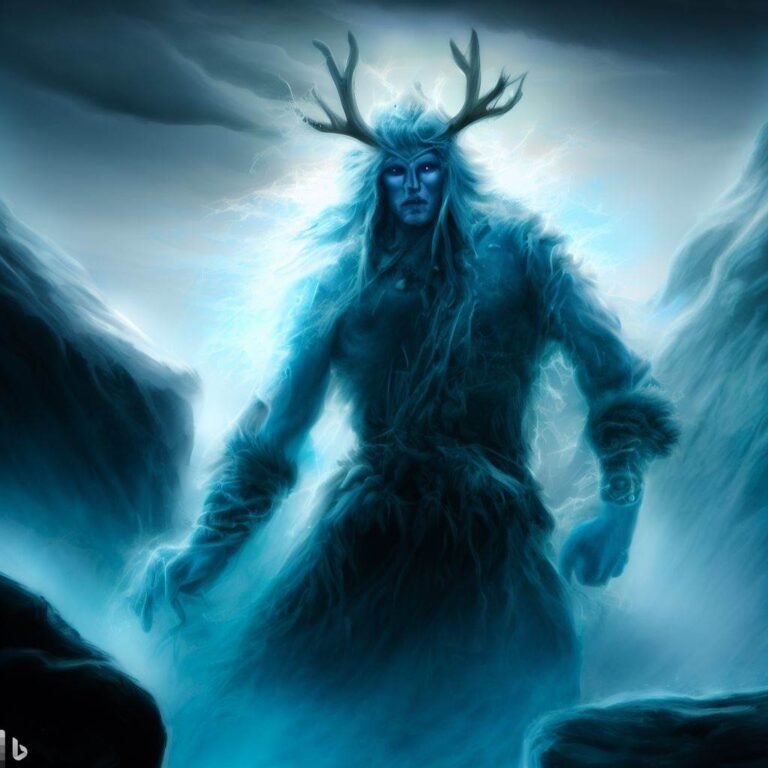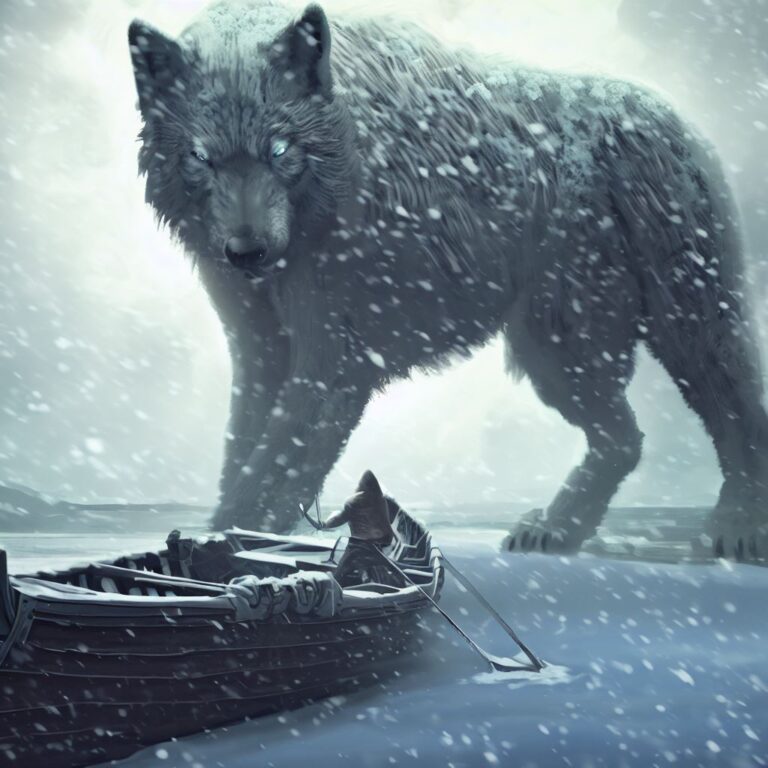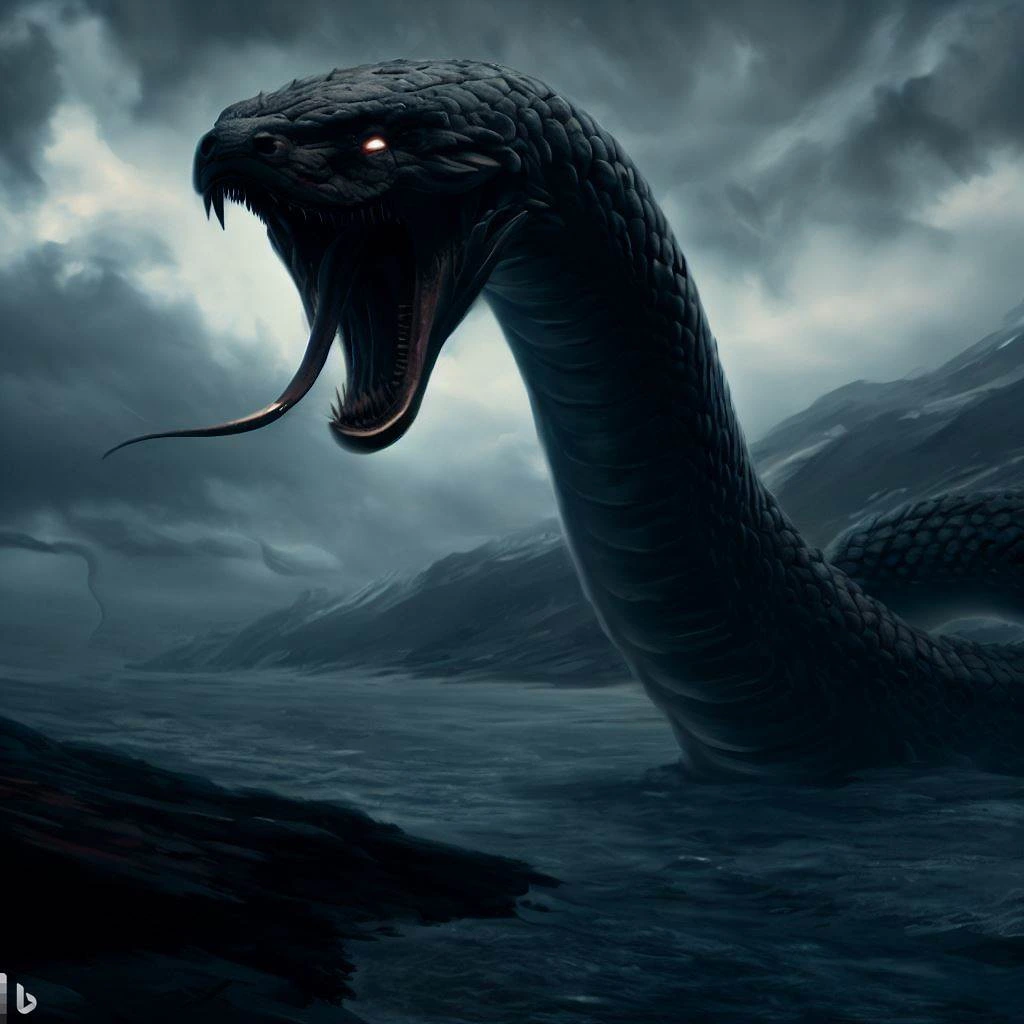
In Norse mythology, few legendary beasts inspire awe and terror as much as Jormungandr (pronounced :YOUR-moon-GAHN-dr ), the infamous Midgard Serpent. This monstrous sea serpent was foretold to bring about the end of the world, battling gods like Thor along the way.
This article will explore the origins, powers, and mythology around Jormungandr, one of the most fearsome creatures in Viking tales. Discover how this apocalyptic monster came to be such a prominent part of Norse folklore.
What is Jormungandr?
In Norse myth, Jormungandr is a gargantuan serpent who encircles the earth and seas. Also known as the Midgard Serpent, he is an arch-enemy of Thor often associated with the destructive forces of chaos.
Some key facts about Jormungandr:
- Enormous snake hundreds of miles long
- Child of the trickster god Loki and giantess Angrboða
- Foretold to kill Thor during Ragnarok, causing world’s end
- Symbol of ocean’s danger and unpredictability
- Important figure in many Norse legends and sagas
- Believed by Vikings to surround the land as ouroboros
Jormungandr is destined to arise from the depths and unleash catastrophe upon the earth. His moniker as the World Serpent comes from Norse myths of him encircling the earth and grasping his own tail.
Origins and History of the Midgard Serpent
The figure of Jormungandr appears prominently in medieval Icelandic and Scandinavian texts compiled by scholars like Snorri Sturluson during the 13th century. But he likely dates back much earlier in Viking folklore and oral tales.
Ancient Beliefs
Ancient Germanic and Norse tribes believed the world was surrounded by serpents and monsters. The ocean that encircled lands and islands was seen as the dominion of a colossal serpent.
Maritime Vikings viewed sea snakes and massive whales as possible incarnations of this being. They saw its coils spanning the entire planet.
Harbinger of Apocalypse
In mythic accounts, Jormungandr is foretold to emerge from the depths before Ragnarok—the apocalyptic battle between gods that ends the world in Norse legend.
Its arrival from the seas was an ill omen signaling the coming cataclysm and the twilight of the gods. Only Thor could oppose it.
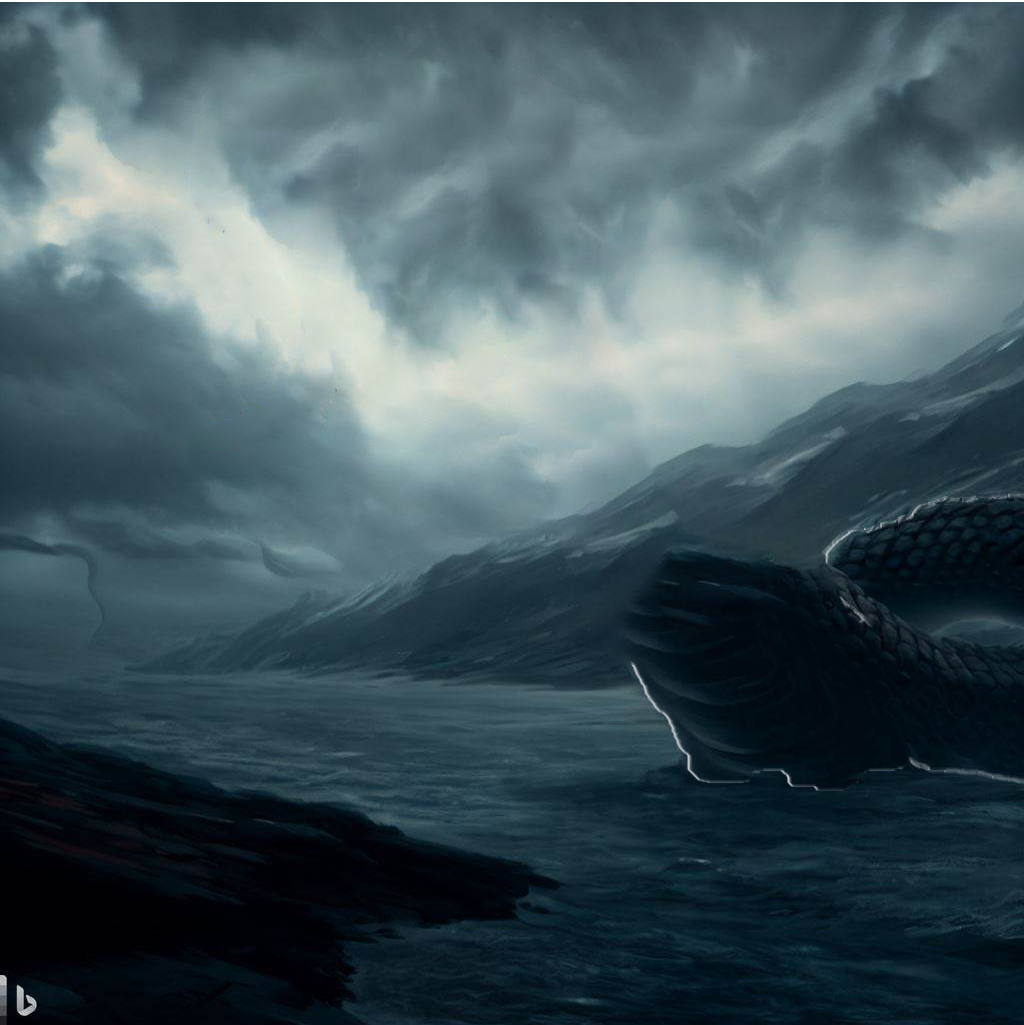
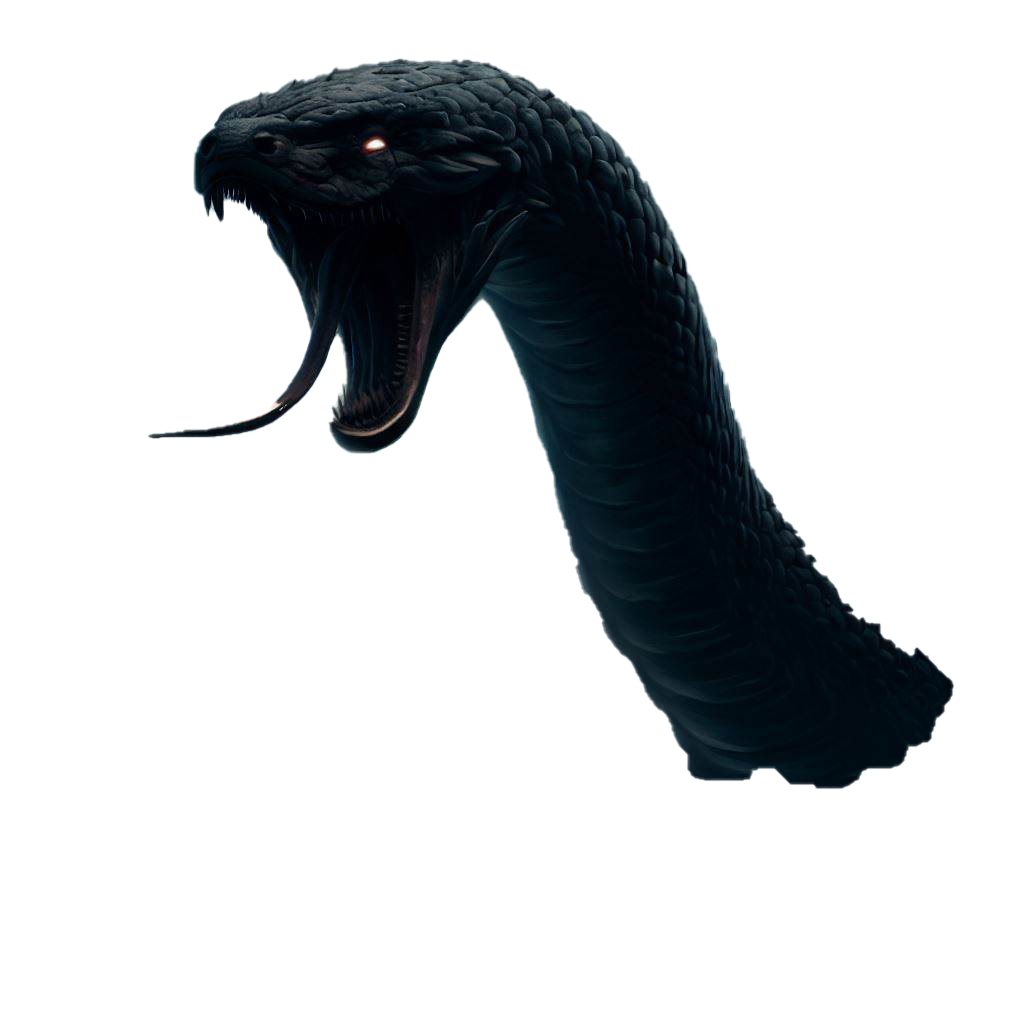
Love Norse Mythology? Read More About the exciting tales of Norse Legends
Physical Attributes
As a mythical beast, Jormungandr is described as a gigantic serpent often spanning over 100 miles in length. He is typically depicted with:
- Enormous size large enough to encircle the earth
- Long, snake-like body with green, black or red scales
- Large glowing or flaming eyes
- Fangs dripping with venom
- Forked tongue flickering from mouth
- Bristling mane or crown of quills around head
- Coils thick enough to crush mountains and ships
- Power to constrict prey or create whirlpools
At times Jormungandr is portrayed with more dragon-like features, but serpentine traits dominate. His immense size and strength make him near-invincible to mortal weapons or heroes, playing a key role in Ragnarok.
Habitat and Behavior
When not encircling the earth, Jormungandr dwells on the seabed, emerging only to hunt prey or when called by Norse gods.
Marine Menace
Jormungandr primarily lives deep underwater where sailors passing overhead may glimpse his massive form. From below, he threatens ships and sea creatures alike with his venom and whirlpools.
Coiled around Midgard
But Jormungandr is fated to coil himself around the earth, where his writhing is said to cause earthquakes and tidal waves. Only Thor’s strength can make Jormungandr release the world from his clutches.
Ragnarok’s Harbinger
In myth, Jormungandr bursts forth from the ocean as a harbinger of Ragnarok and floods the earth with venom. This ends Thor and Jormungandr’s legendary feud in mutual destruction.
So Jormungandr’s arrival from the seas is an ill omen signaling the end of worlds in Norse legend.
Powers and Abilities of The World Serpent
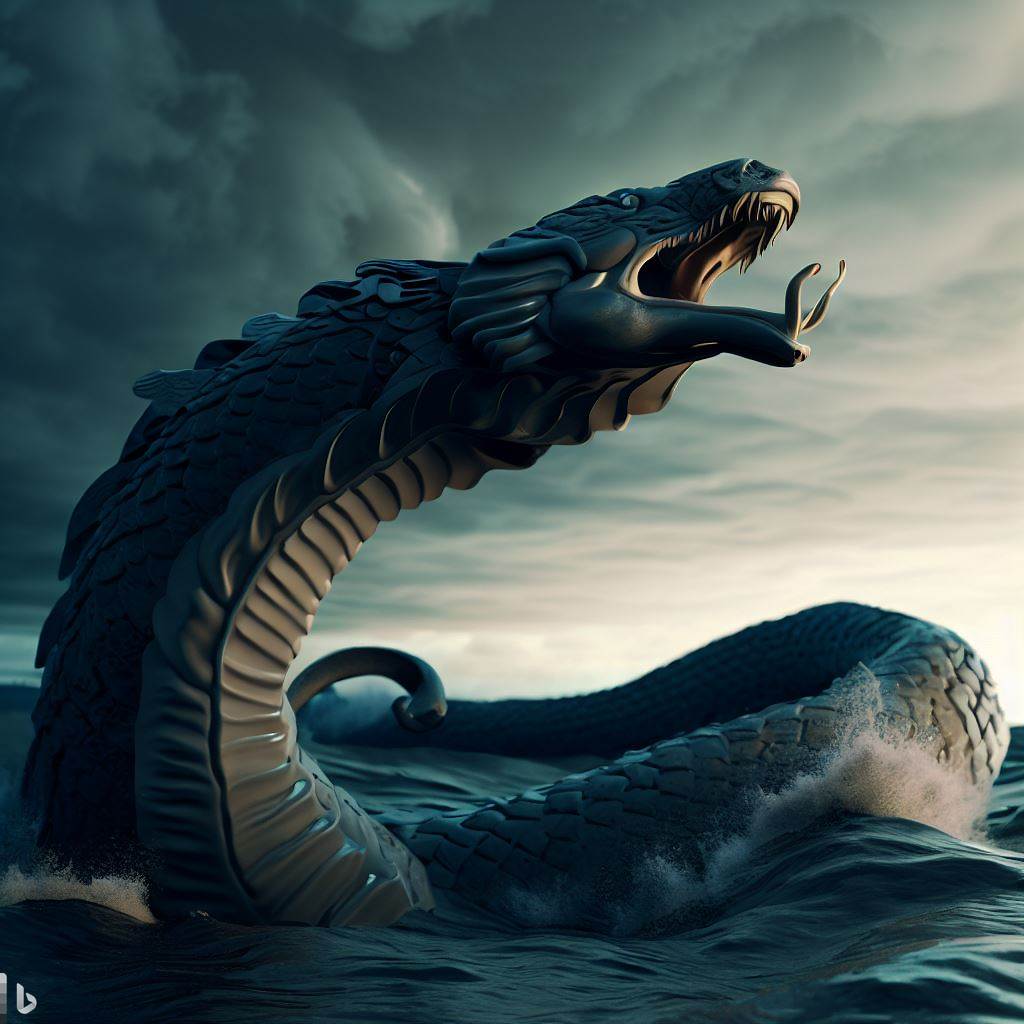
As a gargantuan mythical monster, Jormungandr possesses mighty powers:
- Enormous strength able to crush mountains and ships
- Constricting coils that can suffocate huge creatures
- Deadly venom able to poison air and water
- Breath that boils oceans and burns on land
- Control over storms, winds, and turbulent seas
- Causing earthquakes and tsunamis by thrashing
- Rapid regeneration from wounds
- Destined to kill Thor and begin Ragnarok
- Immense durability protected by scales and magic
These abilities make Jormungandr a formidable foe. He is prophesied to slay even mighty Thor during their fated battle at Ragnarok before succumbing to the god’s wounds.
Jormungandr in Norse Mythology
The World Serpent plays a major role in Norse mythology as an opponent of the gods and herald of apocalypse:
- Fated enemy of Thor ever since childhood
- Born of Loki, highlighting chaotic roots
- Believed to poison sky and earth before Ragnarok
- Killing Thor but being slain in turn during fated battle
- Marking the end of the gods and old world order
- Linked to Yggdrasil, the world tree binding earth
- Contrasted with Midgard Serpent protecting earth
- Overall represents destructive forces of primordial chaos
So Jormungandr functions as a central chaotic figure in Norse myth, whose cataclysmic battle with Thor helps destroy worlds.
Thor vs Jormungandr
Thor, the god of thunder, and Jormungandr, the Midgard Serpent, were destined to be enemies in Norse mythology.
Jormungandr is the offspring of Loki, the trickster god. Thor lived among the gods in Asgard, while Jormungandr grew so large that he encircled the world in the ocean. They met several times in their lives, each time resulting in a fierce struggle.
The Serpent in Legend
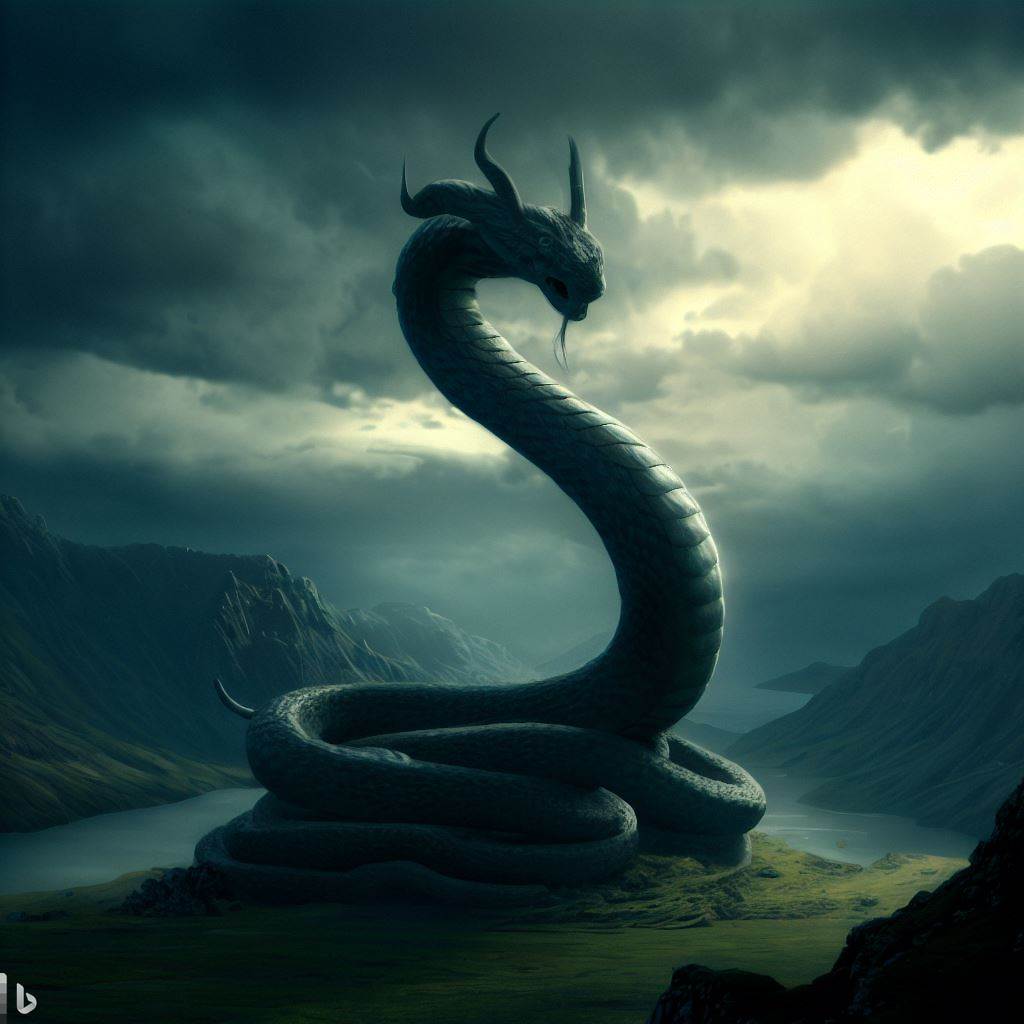
Beyond myths, medieval tales include legendary encounters with the vast serpent:
- Sightings by sailors who mistook its coils for chains of islands
- Heroes like Beowulf who sailed to seek glory fighting it
- Myths of famous viking kings slain battling or swallowed by Jormungandr
- Legends of the beast writhing so fiercely it splintered its own tail
- Folklore used sightings of whales or sea storms as omens of its arrival
Such legends highlight how Jormungandr endured as a symbol of the sea’s danger and unpredictability in medieval lore.
Jormungandr in Popular Culture
As one of the most recognizable Norse mythological beasts, Jormungandr continues to appear in modern fiction:
- Summoned by Kratos in the God of War video game franchise
- Battling Thor in the Marvel comics and films
- HBO’s hit show Vikings portrays the Midgard Serpent
- Appears in Supernatural, The Almighty Johnsons and other shows
- Inspires giant monster characters like the Kraken
- Basis for the hydra in anime series like Fairy Tail
- Used in logos and designs related to Norse culture
- Referenced metaphorically in sci-fi and biotechnology
Jormungandr’s legend still captivates audiences today, transformed into countless fictional incarnations across media.
FAQ about Jormungandr
How big is Jormungandr?
Myths describe the World Serpent as spanning the entire earth. He is typically over 100 miles long.
Is Jormungandr a dragon?
He is considered a serpent but sometimes shares traits with dragons like scales, fiery breath, etc.
Is Jormungandr good or evil?
He plays a destructive role in Norse mythology but is not purely evil.
Did Thor actually fight Jormungandr?
Their legendary battle is described in myth but there is no evidence it occurred historically.
Is Jormungandr related to Loki?
Yes, Norse myth names Jormungandr one of three monstrous children of Loki and Angrboða.
Conclusion
As one of the most terrifying and chaotic monsters in Norse myth, Jormungandr represents destructive cosmic forces that the gods struggled to contain. Today he endures as an iconic symbol of ancient legends and the apocalyptic battle between order and chaos.
The image of the Midgard Serpent encircling the world continues to capture imaginations. And its fated duel with Thor at Ragnarok stands as one of mythology’s greatest battles, bringing about the end of worlds.
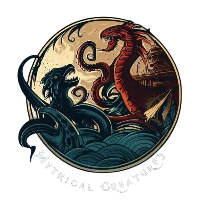
![Rán - The Norse Goddess of the Sea [Pics and Facts] 6 mythical creatures art Rán – The Norse Goddess of the Sea [Pics and Facts]](https://mythicalcreatures.blog/wp-content/uploads/2023/08/Ran-Norse-mythology-artwork-Goddess-of-the-sea-768x768.jpg)
